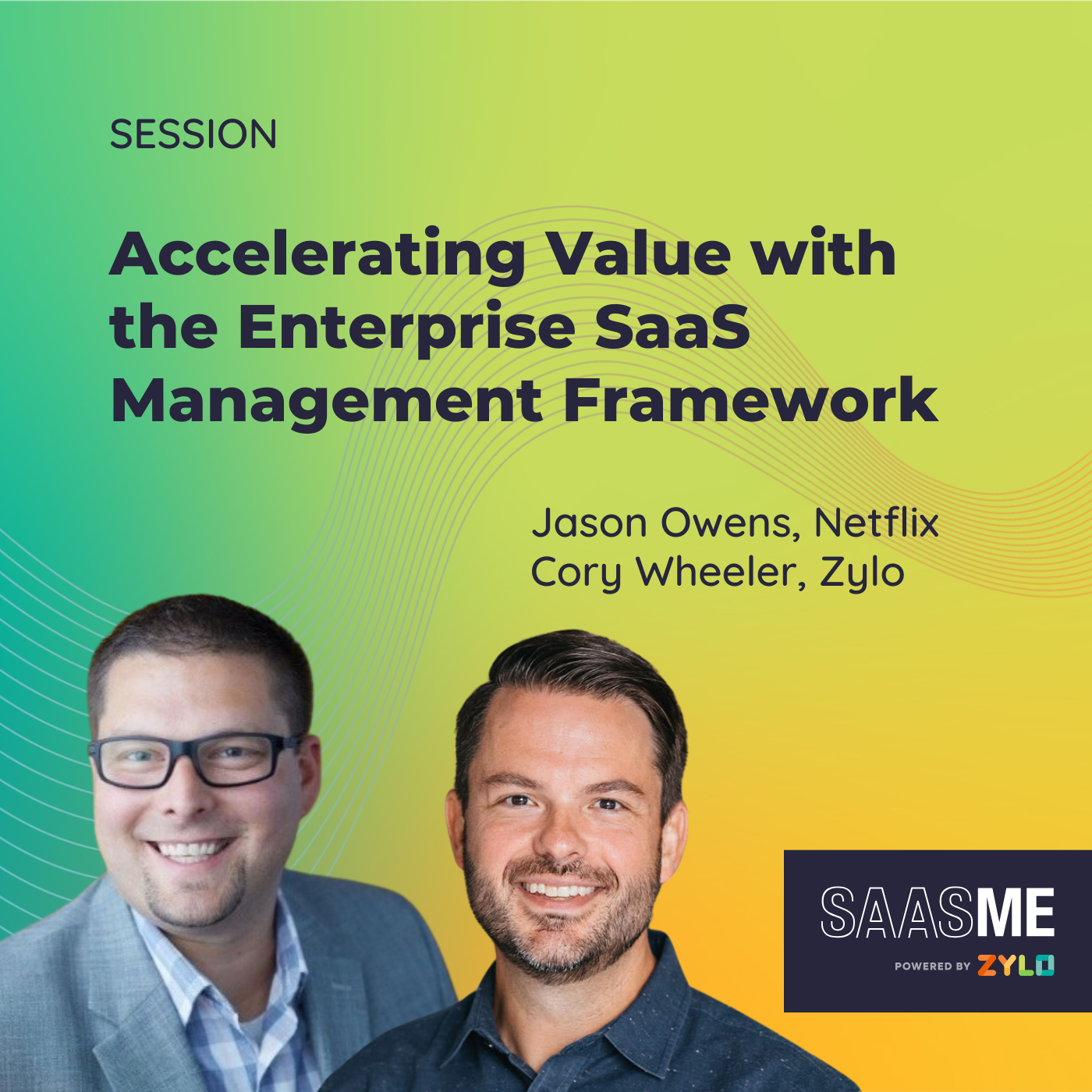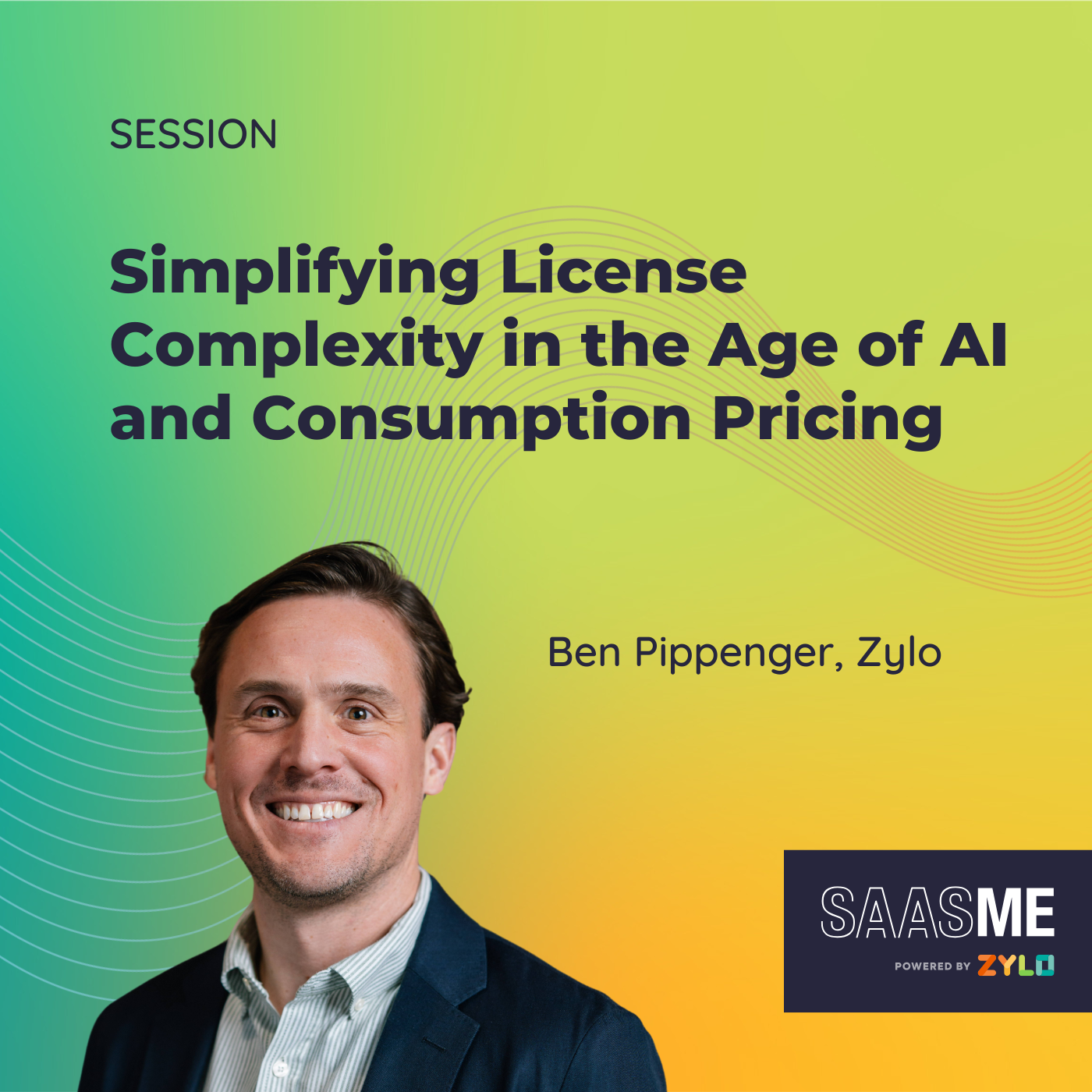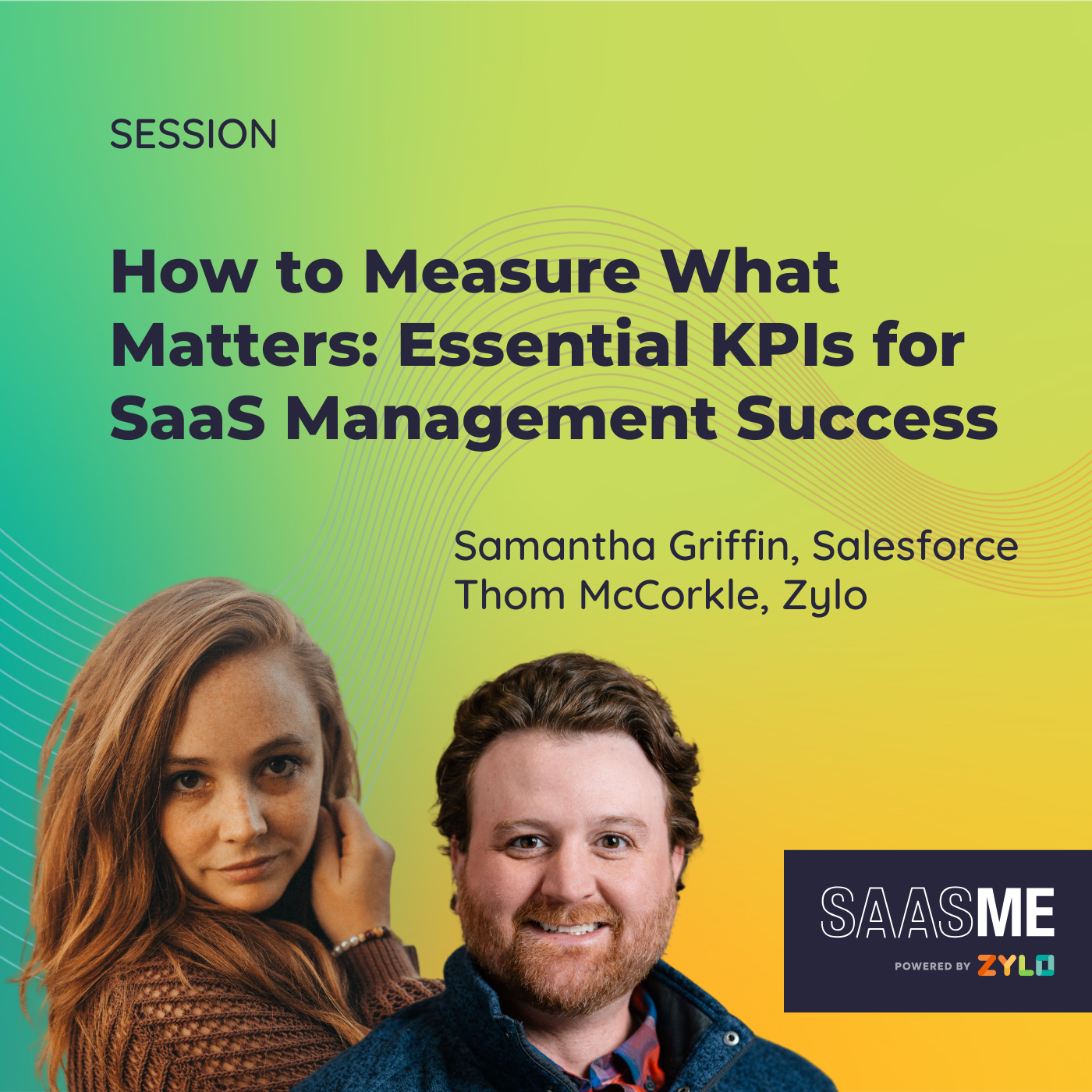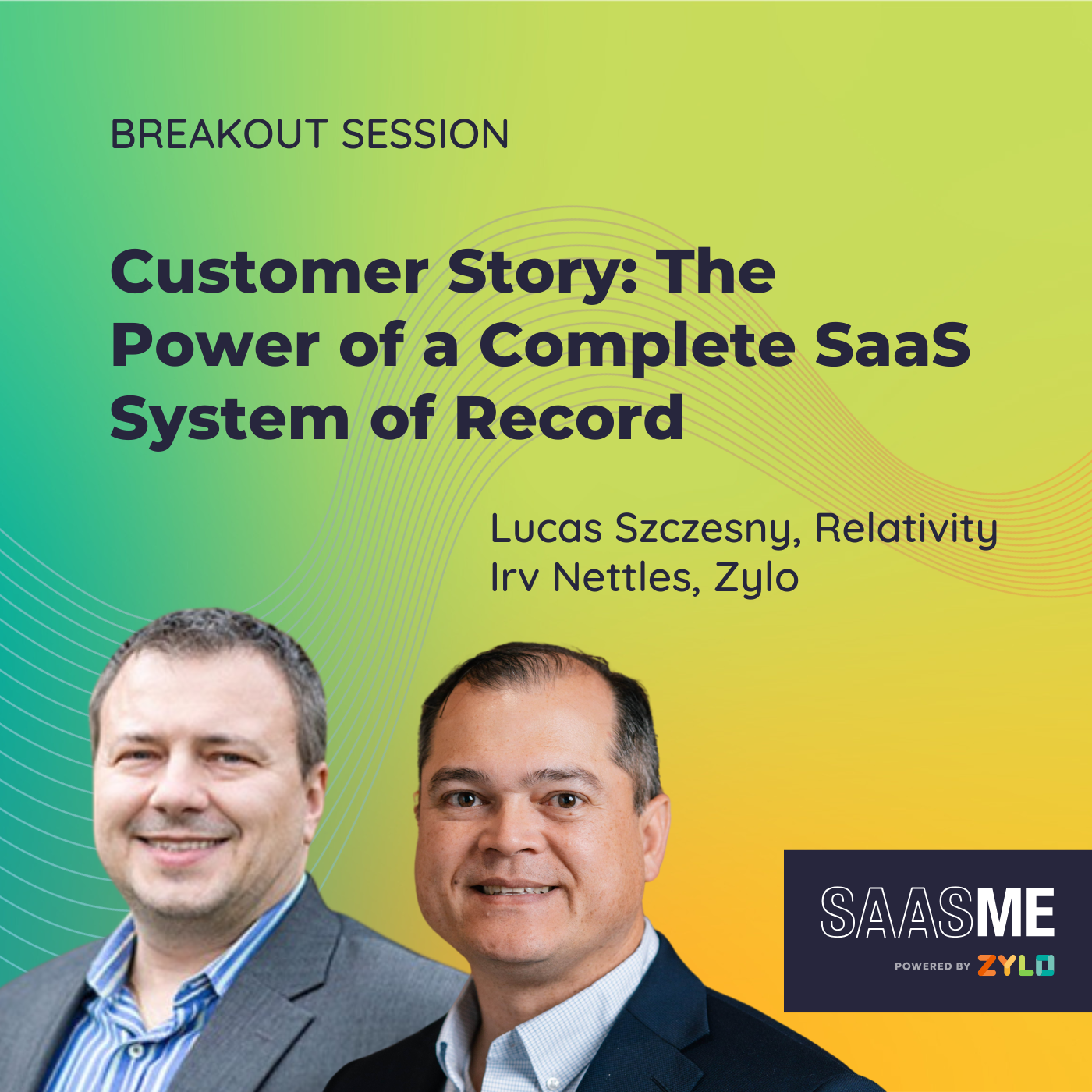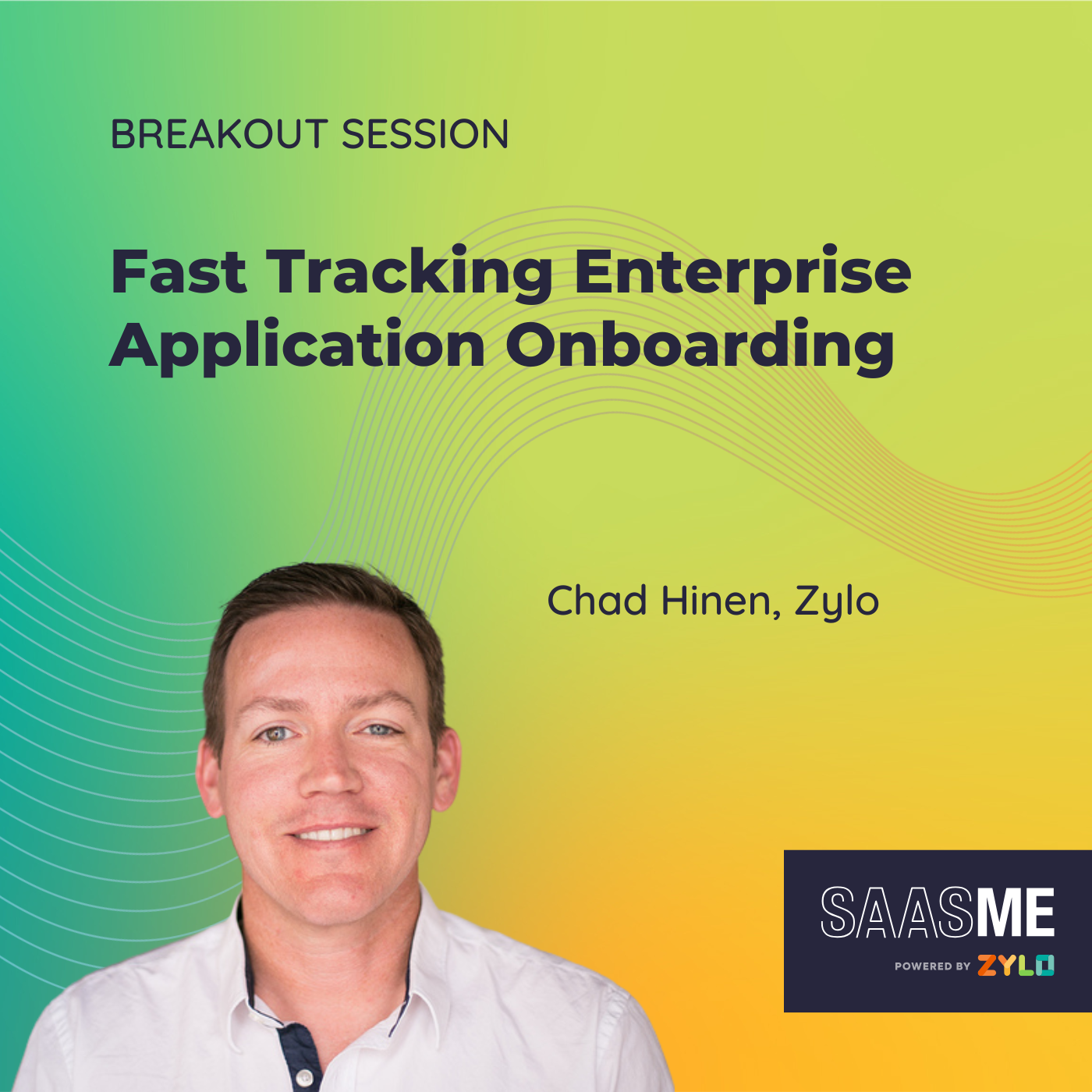The Future Workplace CIO Roundtable
- 0.5
- 1
- 1.25
- 1.5
- 1.75
- 2
Ben: But I have the distinct pleasure of kicking off our session, our CIO roundtable session today with really, a really great group of both CIOs, as well as Helen's going to be here to provide some expertise around some of the research that she's doing as part of her work with the Future Forum at Slack. Our moderator today is going to be Harry Moseley. Harry is the CIO of Zoom, has been CIO for a number of really large worldwide organizations over the course of his career. So I think we're all in for a real treat as we're going to work through a conversation today really about the future of work, future digital workplace transformation. So Harry, I'm going to kick it over to you to go through a round of intros across our panelists today.
Harry Moseley: Yeah. Great. Ben, thanks for that, and pleasure to be here. Welcome everybody to the Future Workplace CIO Roundtable. Sometimes it feels like yesterday and sometimes it feels like 100 years ago, but we all got thrown into this pandemic about 21 months ago. Everything changed for every industry, and as somebody said to me as recently as last week, if things had pivoted back as we predicted in March of 2020, that it would only be a matter of weeks or a matter of a few months before we go back to the way things were, the world would be dramatically different, but it looks like it's going to be two years. So this work model that we've adopted over the last 21 months has become a muscle memory now. It's almost become this is the way we lead. This is the way we manage. This is the way we work. So it's interesting how COVID has accelerated that trajectory that we're on. Got a great panel this afternoon, quick introductions. We've got Ken Cushman, the CIO for a great brand name that everybody in the world will recognize and some of you can see Ken smile when I say that, so CIO for Yahoo. So, welcome Ken. We've got Helen Kupp, the Director of Product Strategy and Partnerships for the Future Forum of Slack. So that's exciting. We've got Deepika Rayala, the CIO of International Operations Center at Yext. Another great, great brand that we all recognize, and of course, my great friend Mark Settle, seven- time CIO Mark. Wow. That's an impressive... Author of Truth from the Valley: A Practical Primer on IT Management for the Next Decade, and several time CIO 100 Award winner as well. So terrific to have a great set of people joining us this afternoon to talk about the future of work. I think we can drop the slide unless we particularly need to have that up there, Ben. So the objective this afternoon is to have a dialogue amongst us. So I will cast a bunch of questions if we have time at the end. Happy to take some questions from the audience, but cast a couple of few questions. Let's get the dialogue going. So Helen, we know the Future Forum is doing all kinds of interesting research on how the workplace is changing. What has your research uncovered that can help today's CIO understand today's dynamics?
Helen Kupp: That's a great question, Harry. And for those in the audience who don't know what the Future Forum is, we're a consortium that's backed by Slack alongside our founding partners, Boston Consulting Group, Herman Miller, and Management Leadership for Tomorrow, which is a nonprofit that's focused on transforming the leadership pipelines for underrepresented groups. And at Future Forum, actually we've conducted a quarterly study over the last 21 months that digs into how work and employee sentiments are changing. And we pair that with dialogue with C- suite executives across Fortune 500 companies to take those insights into tangible actions and understand what's actually happening within organizations. So we launched research, our most recent study last week. One of the biggest themes that continues to show up is that as you mentioned, Harry, at the beginning, after working in this way for 21 months, we found that flexibility is key and that desire for flexibility has stayed consistent quarter over quarter. And we look at the data, employees continue to have a strong preference for this flexibility. We saw 76% of global knowledge workers want flexibility in where they work. So when we talk about things like hybrid or work from home or work remotely, but a stunning 93% of global knowledge workers want flexibility in when they work. So schedule flexibility, which honestly is something that we don't talk about enough as leaders when we think about the future of work options. But I think more importantly, we are finding that employees are going to vote with their feet on, in terms of what they want from their employers. The same study showed that flexibility ranks second only to compensation when it comes to job satisfaction. We know that the Great Resignation is happening and is top of mind for a lot of our executives and saw that 57% of knowledge workers are open to looking for a new job in the next year. And I think those two things are an important context for us to set our discussion today because of two things. I think first, we saw in the most recent release last week that at too many companies, that Great Resignation is being driven by the great employee/ executive disconnect. There's this fundamental disconnect between executives and employees about returning to the office, and we found that of those who are currently working remotely, executives are nearly three times more likely than other employees to actually want to return to the office full- time, 44% versus 17%. And second, the big thing is that companies that are embracing flexibility, we know it's going to be messy. We know there's no blueprint for it yet when we're talking about mixing in the office as a tool. So going digital first becomes even more important to ensure that we're prioritizing digital infrastructure as much as physical and ensuring that everyone, no matter where they're working from, home, co- location, co- working space on the road, that everyone's getting equal access to information, people, and opportunities, which is a crucial, crucial piece we're finding in making flexible work actually work. So I think the primary takeaway from the research is that it's important and crucial for us to embrace flexibility and going digital first as a major strategic priority for us to retain top talent and just achieve better business outcomes. So those are the big messages from the data, not just from the recent release, but quarter over quarter.
Harry Moseley: Helen, thanks for sharing. I love all the interesting data points there around knowledge workers, 76% want the flexibility and 93% want to be able to have flexibility about when they work. One of the things that we've clearly learnt over the last 21 months is that leading and managing teams during this time is dramatically different. It's no longer about the schedule, and it's no longer about where. It's about the contribution. It's about the deliverables. It's about are you getting the job done? Eric Yuan, CEO and founder of Zoom, my boss doesn't really care when or where I work. What he does care about is that I'm getting the job done. That's the same with all leaders, because you're no longer managing people. You're managing outcomes. Love to hear from Ken or Mark or Deepika on this topic.
Ken Cushman: I think I would just add in a little bit, Harry, in that I always thought as a leader, I led that way when we were in an office setting that it's not so much about the where and when, but the delivery itself. And I think it's really been flipped on its head like you were saying. And it's absolutely, if you're not a leader that's being super empathetic and reaching out to your people and understanding how they're doing when they do their best work and where and how, you have to leave it up to the teams to decide. So I think completely agree with you there in the context of how I as a leader personally have had to amplify that even further and a lot more than legacy beliefs there.
Deepika Rayala: Yeah. The point that I would raise is I think it's very clear we need to create this flexible... Sorry, can you hear me? You need to create this flexible environment. I think what we need to figure out is to the point that the executives are three times more inclined to come into the office versus the employees, I think it's about that what happens to that creative teamwork that we may be missing in this process? I mean, do we have the tools and the process to make sure we don't lose that in the process? I think that's one area I don't know with all the tools we have, if we've figured out how to do that, I think that's where I feel like there's a little bit more work to do. Because I think we've embraced a lot of different SaaS tools, and I think now, I think we are on the verge of having a SaaS burnout, trying to go digital. So I think we need to figure out how to get to that right balanced mode that still allows us to have some part of that creative group thinking that still happens.
Harry Moseley: Yeah. That's a great point, Deepika, and it's the notion of work is something we do, work is not a place. The office is a place, where we can do work, but it's only a place where we can do work. Many companies are actually rethinking, what is now the purpose of the office? And many are pivoting. Well, the office really is a place where we're going to bring people together to ideate and to create. And then when people need to do" their work," they can do that from anywhere. But let's move on. So flexible work options seem to be here to stay, clearly from the stats that Helen just articulated. I mean, if it's okay, Helen, I'd love to use those going forward, but they're great stats. So-
Helen Kupp: Do!
Harry Moseley: ...what changes in how companies use SaaS now to empower workers have you seen in the past 18 months? So Ken, if you want to pick up on that and then maybe Mark, you have some thoughts around that too?
Ken Cushman: Yeah. Thanks for throwing that to me, and I'll take a crack at it and then open it up to the rest of the panel. I too was writing down the stats as fast as I could, and I'm sure I got at least a couple of them wrong. So, I'm going to have to ask for a copy after.
Harry Moseley: The good news is it's being recorded on Zoom. So we have that now and I'm sure Ben's going to share that out with the world afterwards, so it'll be good.
Ken Cushman: Yeah. So look, at Yahoo, we were lucky in the context that we had really been driving on a modernization journey for quite a while before the pandemic. We're really largely a SaaS first company from a broader productivity, but tooling perspective across the board. And in that, luckily we were able to transition fairly seamlessly overnight to a working from home perspective. So when I zoom out and think of it from a CIO perspective, it was really more one, for me to think about how can I really drive the employee experience even more? And what can we do to accelerate and ensure that we're continuing to deliver as good or better services than we were doing work in the office setting, if you will? So I had the teams think through what are all those engagements, whether or not it was people coming to a walk- up window historically, coming and getting equipment out of IT vending machines and all those other interactions we were having with customers. It was how do we continue to deliver and get that same customer satisfaction again, or greater. So things like virtualizing our walk- up windows, ensuring that we have the same phone chat and really amplifying a lot of the collaboration tools that we had in- house, as well as things like really virtualizing our IT vending machines, almost virtualizing our logistics entirely of how do we get the right equipment to the right people at the right times? How do we make it just as easy as it was before to walk up and push a button and get whatever equipment that they needed out of a machine? So I think those are some of the things that we really did from a service delivery perspective. And for us, it's paid off tenfold. Customer satisfaction still remains very high in terms of how the teams engage with us. And from a practical reality where we were adding in additional services to drive better collaboration, better connections. Universally, I would say it was 100% SaaS across the board. I can't fathom the velocity that we would not have had in terms of amplifying that value again, had we not gone all in on SaaS even further with onboarding new solutions. So I think I'll stop there and open it up to the rest of the folks to share in their thoughts too.
Harry Moseley: Yeah. Ken, I've heard that from many CIOs around the world. The quote was, " How would we have survived the last 21 months if we didn't have cloud?" They also say that about Zoom. I had to put that in there. Sorry, Ben. And it's so true. I mean, can you imagine if we had suffered a pandemic like this, call it, 15 years ago? It would've been a very dark and it wasn't a very bright time for sure, but it would've been dramatically darker and dramatically more difficult. And the economic impacts around the globe would've been off the reservation, bad for so many hundreds of millions of people. So fortunately, thanks to cloud and a variety of different technology, we managed to get through this. For hundreds of millions of people, well, I mean, obviously many people didn't, and suffered. But love to hear Mark, Deepika on this topic, yep.
Mark Settle: I just would add really reinforcing what everybody else has said, I think there was a big push early on during the pandemic to consider SaaS alternatives to a lot of legacy business applications. Now the panelists today, all of us have come out of a West Coast, SaaS first, cloud native environment, and we forget about sometimes there's a whole bunch of Fortune 2000 companies that still have a big mixed portfolio of on- prem applications that they're supporting and some SaaS tools. And I know working with other Bay Area companies that were selling applications, they had many so- called Bluebird opportunities early during the pandemic where customers they hadn't even... prospects they hadn't even talked to showed up on their doorstep saying, " This has forced us to really seriously rethink adopting some alternative to an on- prem system that we have." Now, I don't know the extent to which that's persisted over the last 12 months or so, but I know that was a knee jerk reaction very early on when the pandemic hit.
Harry Moseley: Deepika, you wanted to add anything?
Deepika Rayala: Yeah. I mean, I agree with all the comments that were made. I think it's been the same for us as well. I think being this typical West Coast company, I think we are totally told on SaaS right now. And that's really helped us quite a bit in terms of how we were able to pivot and be very relevant as we went through the pandemic. But as I said in my earlier comment, we are still trying to figure out what does that optimal balance and how do these even talk to each other, so they all don't feel very disjointed? So that's really what we're working on. And we did some of the stuff that Ken talked about as well, virtualizing the help desk, trying to be able to use... We're working on it. We're not quite there, but we don't want our Zendesk and our Slack and our help desk, all of these to be different. We want to be able to give that streamlined and seamless experience to our users. We are somewhat on that journey, but not fully there.
Harry Moseley: Yeah. Yeah. So the seamless, the CIO for one of the large clients said to me recently, it's like when we were all in the office, having all these independent tools was fine. But when you're in the virtual world, having them independent tools feels a lot more discombobulated. Because I'm like, " I'm going here, going here." But it's the same as when I was in the office. So we really need to focus on how do we create an environment that I can more easily navigate through the portfolio of solutions that I need to do to get my job done. So my summary is we got to maintain the things that are working well. We got to harvest those to the extent that we can, we got to keep them, we got to identify those, where those opportunities turn the dial to the right and improve. One of the things that we've seen over the last 21 months of course is the speed and agility of being able to do things. Many corporations, many enterprises around the world reduced the level of authorization to acquire technologies and acquire solutions. And they saw that as a consequence of that, the company was able to go dramatically faster and dramatically better than in the pre- pandemic world, where they had big steering committees and everything had to be reviewed. Which leads into the question, when we think about all these new tools that your organization has implemented over the past year in terms of numbers and types of apps being introduced, who is bringing them in? Employees? Lines of business? More formally known as shadow IT, IT itself, and what impact have they had on your business? And Deepika, if you want to kick off with that, that would be great.
Deepika Rayala: Yeah, sure, sure. So I think here at Yext, the way we think about our software is we put them into three buckets. So the first one is IT managed and IT administered, and these are your large platforms like Salesforce, NetSuite, Workday that are core to your SOX compliance, really corporate- wide systems. I mean, Tableau, all of these apps like that. And the second bucket is business managed and IT administered. And these are that second bucket of apps where it's totally fine for the business to manage it, because I think it's very integrated into how the business operates, but just from a segregation of inaudible perspective, it makes sense for IT to administer maybe user management and things like that, because these also fall in the realm of SOX, related to SOX. And then there's the third bucket that we call business managed and business administered. Now, these are the ones that we feel like whether it be sales, marketing, HR, engineering facilities, there are apps that we feel like the business can own and run with it. We help them with the one- time setup. Sometimes they need employee master data. Sometimes we need to set up... not sometimes, all of the time, we need to make sure that it goes through our Okta SSO. So we help them with the one- time setup, but the business really runs with those apps. And overarching what we have is a new software request process, so we always know what new software is being purchased because every new software, it doesn't matter if it's$ 500 or $1, 000, a ticket has to come in. We look at our existing software catalog, so we are sure we are not buying a sixth project management tool or a 10th reporting tool. So we weigh that against our software catalog. We send it through the security review process, and then we make a decision. And I think this process has worked well for us. And in the last year, we bought maybe about 15 or so tools. And I would say that 85% of them fall in that third bucket, they're business managed and business administered. There are tools like Marketo for a round robin allocation tool that integrates to Salesforce. There was 6sense for account- based management, outreach for sales engagement. For example, our HR team bought a tool called Thrive for employee wellbeing. Now it's totally fine for them to get Thrive and roll it out to the employees, and we just support it from a SSO perspective or a little bit of master data perspective. So I think that's the trend that I'm seeing, and if I look at my overall software portfolio, I would say volume- wise, it's probably 50% in the IT managed and administered space, and 50% in the business managed space. And I think that process is working well and our philosophy is that IT doesn't have to manage every tool. In fact, it sometimes impedes the pace and velocity of the business. So I think we really need to think about what falls in each of these buckets and make sure that there is the right segregation of duties for key apps.
Harry Moseley: Yeah. I think that the way you presented about IT managed and administered versus business managed and administered makes a ton of sense, because let's just be honest. The technology literacy of everybody is dramatically more today than it was call it a year, two, three, five years ago, and that trend is going to continue. And the role of IT has changed a lot over the last several years as well. IT is less about building the solutions, acquiring the technology, deploying it and rolling it out. It's becoming much more a business managed and a business administered process, and IT is the underlying infrastructure that the technologies are running on. So I think your approach makes a ton of sense and then they have skin in the game, and they have ownership. So I think what we have to watch for is that they don't bring in this tool and then bring another tool to replace it, but never replace it because then they'll just create a lot of legacy. So I'd be interested to get other feedback on this. Ken, Mark, Helen?
Ken Cushman: Yeah, I would add we're very similar in the context of how we think about it being the enterprise IT led, business IT, and then employee led IT. I think the add I would say in addition to Deepika is it's really about setting those standards and architecture and ensuring that people buy things the right way, that we can catalog and manage them. What I've found personally working with most business groups. And to your point, I think Harry, shadow IT is not a bad thing. And to me, I think it all needs to be relabeled as business led IT overall. And it's really about that partnership and how you work together. I've found, and we really push the teams and work with our business groups to say, " Let us help you. We will help you get through the purchasing process faster. We will get all these tools rubber- stamped faster with security. We will ensure it will work in the environment and we can get you up and running that much faster, so we're here to help." I would say 10 times out of 10, the business people that we're working with are surprised we're actually there to help, very much excited to have the help, and it's not that they want to manage and drive through all that. They just need to be enabled to drive their business with velocity. And I think from a capability and capacity perspective, they're probably far better in many ways to drive that. And again, technology is there, like you said Harry, ubiquitously with every single employee anymore. And it's only going to be more so in the future. So I think that's how it's really manifested itself and how I approach it, and how I have the IT organization drive forward with it.
Helen Kupp: I think what's interesting, I want to build on this point from the last question is before, when we had offices as a single default headquarters, we were thinking about, okay, there's a physical space and using different tools, on- prem, SaaS, whatever. And switching back and forth was fine if we could just walk to our IT department and ask for help in how these things fit together. And now I think in the more virtual digital first space, there's an opportunity for everyone here and all of us to think about if the IT department CIOs are that infrastructure layer, how can we create that seamless experience, like digital headquarters, that helps to make that transition from one tool to the next more intentional, more connected in a way that doesn't create that burnout that you referred to earlier, Deepika. I think it's very easy for us to say, " Okay, tools can help us be more productive when you look at one or another," and one of the interesting things coming out of our own study on Future Forum is that we're finding that companies that are technology innovators, who are using tools intentionally, trying out more modern, specific tools for their work needs see higher scores for employees across all dimensions of work. So things like overall satisfaction, work- life balance, even sense of belonging. So I think there's an opportunity to up level the CIO role and how to think about digital headquarters and the seamless connection that fosters all of this as just a nudge forward from where we are now.
Harry Moseley: Great. Any last comment, Mark?
Mark Settle: Well, just to pick up on Deepika's description of how they're managing things, again, there may be members of the audience that are in some early stages of adopting SaaS. And I think what I would encourage people to think about is establishing some rules of engagement with your business partners about who's going to manage what, and who's going to administer what. I think a lot of people make the mistake, they argue that on a case- by- case basis initially, if you're in the earlier stages of adopting SaaS. And you're better off having at least some draft constitutional convention about what we're going to do in IT and what you're going to do out there. And we can revisit that a year from now and fine tune it. But if you don't do that, if you don't hold the convention and write some rules of the road down, then everything becomes contentious. Every new tool that they bring in or you bring in or jointly bring in requires a very painful set of conversations.
Harry Moseley: Yeah. I think that's an excellent observation. So a certain minimum set of standards, it has to be something, it has to conform to a certain set of security standards or a certain set of profiles, et cetera. And the notion of if you want to bring one in to replace another, then we got to make sure the other one exits. So-
Mark Settle: Yep, sure.
Harry Moseley: ...data retention and data discovery and access controls and integration with single sign- on has to... Yeah, I think that's an excellent, excellent suggestion. Good. So one more quick question, then I think we might have time Ben for one or two questions from the audience, if there's anything out there.
Ben: inaudible to chime in with questions either through Q& A or through the chat feature with Zoom and we'll get to those questions here in a few minutes.
Harry Moseley: Yeah. Great. So final question, we'll start with Helen and then go to Mark, Ken, and Deepika. Final question is and then I'll give you mine, what's one prediction you have for SaaS in the new workplace in 2022?
Helen Kupp: Oh, one prediction? There's so many different predictions.
Harry Moseley: There's so many predictions. Yeah.
Helen Kupp: As I already mentioned, not quite a prediction, but I do believe that flexibility is here to stay, and we're all going to need to figure out new ways of supporting that both from the digital infrastructure perspective as well as just people and process. But I think what's going to be interesting and really unlocked with different SaaS tools is that Deepika, you mentioned this earlier, we're grappling with things like beyond productivity, what about creativity and innovation? What about sense of belonging? Can technology do that for us as well? And in the data, we're starting to see that yes, it's possible. We need to be more intentional about it, but I think one of the predictions that I'm hoping will come true in the next couple of years is that we are going to find new ways to create better connection and sense of belonging through the use of technology, because it's unlocked such a level playing field for so many different groups while we've been working in this way. And I think that there's just so much more opportunity for technology to play a deeper role in that relationship building, connection building space that we don't normally think of when we think about tools and digital and all of that. So that's my big one beyond flexibility.
Harry Moseley: Yeah. I love that, Helen, because that gets into the whole" democratization of meetings." If you look at the six of us here, our heads are all the same size. There is no hierarchy here, it's inclusive. People can join. It's collaborative, and there's a sense of equality between all of us. So, how do we maintain that when we go into the hybrid model? And yes, we have the solution in Zoom. But yeah, that's a great one. Mark?
Mark Settle: So I'm going to give you a prediction that's maybe more of a two- year or three- year prediction, which is I think we're at the very early innings of developing effective collaboration tools or having a suite of effective collaboration tools for this hybrid work environment with an extensive population of remote workers that simply won't ever come into an office whatsoever. And really what we've done if you look back at it, we've picked up most of the standard tools that we had before. They were email and texting and file sharing, video conferencing. We enabled them from home environments and a lot of non- office environments and we've gotten through the crisis. And I don't know about the other panelists here, but everybody I talk to is experiencing certainly a fairly high level of mental fatigue and burnout because of the way they're using the tools. They're working longer hours, there's more asynchronous communication that's happening. So you're always on. You're trying to mix in personal activities into a work day that ping- pongs back and forth between personal stuff and business stuff, et cetera. And I can't help but believe that somebody will crack the code and start thinking of ways of integrating these communication channels, prioritizing the way I use my time to communicate in ways that can address that stress issue, which I think is a longer term problem actually that somebody needs to think about, really from more of a mental health perspective. So what if we re- engineered our collaboration tools kit that we have today from the perspective of long- term mental health. I think there's a challenge out there for the VC community to start making those investments.
Harry Moseley: So big predictions around collaboration and improving the stress on people from a mental health. Great, great. Yeah. I don't know about the rest of you guys, but I went out and got a pandemic puppy back in April and that's my stress relief because it forces me to get up and take him for a walk every few hours. Doesn't matter what the weather's like, I still have to go, otherwise there's going to be an accident in the house and that'll be a bigger disruption than taking him for a walk. And it's nice, and I always leave my digital devices at home. I don't take my phone with me and don't do any calls and just take a 20, 25- minute walk. And it breaks up the day and allows me to reset, which is... So that's what I'm doing to combat exactly what you said, Mark, which is otherwise, I'd be Zoom to Zoom to Zoom to Zoom, and doing that 14 hours straight can be a little... can hurt the brain.
Mark Settle: Yep.
Harry Moseley: Yeah, Ken?
Ken Cushman: Yeah, thanks. I think there's a little bit of connection here and Helen, maybe thank you for providing data to back up my prediction before I even made it, but I think there's going to be an even more emergence of what I would characterize as more individualized flexibility in the workforce or for a lot of companies that want to jump ahead and be more progressive, I think we will never be in the office again. Hybrid in and of itself means a lot of different things to a lot of different people. But for many companies, I think it's going to be a huge competitive advantage in the context of how we compete for talent for us to really drive even further on individualized flexibility. And I think Harry, you touched on it a little bit in the context of how when people work, being deliberate about your interactions, Mark, some of your thoughts as well. Touch on that as well. I think it really is about looking towards the future with that individual flexibility lens and it'll manifest itself of what are all of our policies, what do we allow people to do, when, where, how, with what tooling? And yes, I think there will be a whole emergence of a whole new wave of tooling, if you will, around it as well. So I'll stop there and go with individualized flexibility.
Harry Moseley: Excellent. And Deepika?
Deepika Rayala: Yeah, sure. I think some of these points have already been discussed. So for me, if I were to summarize two points, one is hybrid is here to stay. So the focus will be on employee wellbeing, not just productivity. And on preventing SaaS burnout. And the second point is I agree with Mark, I do think there is something missing here. I mean, if I were to take this one step further to what Mark said, I think we are missing the digital office in some ways. When I log on every morning, I want to be able to see where is my team, where are the colleagues I work with and the rest of the people? So someone may decide to come in that day, someone is remote, someone's traveling. So have a map and a quick way to knock and talk to them if I need, and then have all these other integrated tools on the side. I mean, we know that there's already a couple of startups working frantically on these things, but I really think something like that is required for us to be really effective in this long- term hybrid world.
Harry Moseley: Yeah. I love that idea, Deepika, of the digital office. It's like, where are my people today? Who's in, who's out? And for those that are in, where is in? Are they home? Are they working in a hotel somewhere, or maybe camping, what have you? Some people early in the pandemic decided, " Well, if I'm going to be working remote for the next six months," they went out and got an RV and they were on the road all the time and working out of the RV, but being able to see the country, which was a pretty cool idea actually.
Helen Kupp: For what it's worth, and this is partly because we work at Slack, but Slack is our digital office. We use it a lot for... Statuses will be updated if you're caregiving, if you're working from a different location, if you're in the office or not. And the fact that we can do things asynchronously, especially with things like the new video clips and the ability to do informal huddles, we've leveraged a lot to be our connective tissue in connecting both people, information, as well as different tools. So that there's a single place where all of this is happening. So for what it's worth, it has worked well for us, but we've been deep in Slack for a very long time.
Harry Moseley: Yeah. We just introduced this thing called Huddle on Zoom chat, which gives you a visual as to where people are, so more to come on that. But my prediction in 2022 is a little bit of everybody's together, which is when we think about artificial intelligence and augmented reality and virtual reality, I fundamentally believe that we're just tapping the surface, scratching the surface on these things. And we're going to see so much more from these technologies in 2022. I mean, we're leveraging artificial intelligence for things like hot desking. So Deepika, when you reserve a desk in the office, it'll tell people you work closely with Deepika's going to be in the office on Tuesday, do you want to reserve a desk? So things like that are virtual reality, partnering with Facebook and Oculus to make the virtual experience better than the in- person experience for things like persistent whiteboarding and things of that nature. So I frequently said over the last several weeks, I wish I could go back 20 years earlier in my career because there's never been a better time to be in technology than right now. So I feel like it was great, but I feel like it would be even greater today. I think we have three minutes left on the clock. Ben, I don't know if you want to pick off one or two questions from the audience that maybe we answer really briefly?
Ben: Yeah, for sure. So there was one question that came in around hiring priorities and how have your hiring priorities changed the course of the rise of SaaS management in the digital workplace. As you think about the evolution over the last 18-24 months, have you had to change your team structure to support a more digital workplace focused team?
Harry Moseley: Who wants to take that? Maybe Ken, you went off the deep end in cloud, everything cloud for Yahoo, so.
Ken Cushman: Yeah, I think we jumped in with Zylo going back several years now and we already had some good baseline frameworks in place in terms of team and whatnot. I would say fortunately we have adopted and carved out full- time roles that are working just in this space at Yahoo. And to that end, I'm looking to hire and bring on a few more folks to even accelerate more here. I think it's taken us from a being very operationally focused to a place where we can add a lot of value and be more proactive, and I think having a couple more heads there to help drive the strategy and delivery is going to help quite a bit more. So going into next year is definitely adding a couple more heads in this space to help leverage all the data that we now get out of Zylo and information and drive to that next level of maturity and governance.
Harry Moseley: And maybe Deepika, you have anything you want to add?
Deepika Rayala: Yeah. I'm assuming this question is much broader in the sense of if you're working hybrid and what is your hiring looking like right now? I would definitely say that we are a bit more open to hiring the remote workforce right now. And the whole India operations that we started for Yext is another example where we are largely going to be flexible and remote. We might as well have this 24 by six model, because we have operations obviously in Europe and East Asia as well. So we are trying to build a more flexible workforce, but in different time zones. So I think that's where our focus has been, is to really spread it out so that we can have flexibility, but within that flexibility, we should find some continuum so that we have someone able to support everyone that's working in any time zone.
Harry Moseley: Yeah. So Ben, just one quick comment from my side. So I think what every organization has discovered over the last 21 months is geographical boundaries are now unlimited, where geographically agnostic to hiring people, you can hire people wherever they are and you don't have to relocate them anymore. The most critical is time zone. The most critical is skills, most critical is chemistry. And talking to colleagues in Atlanta or in Alabama, big tech firms weren't there. Now they are there, not physically. Virtually. And talking to a CIO in Alabama last week, he says five people have resigned to go work for Google or Facebook over the last week, whereas previously in the last year, nobody did that. And not only that, they're offering California salaries to work in Alabama. So this is a huge challenge that we're all up against now. I think we're going to see not just the talent being higher, but it's also a compensation escalation. Yeah, so.
Ben: Coming at you live from Indianapolis, Indiana. I can tell you, that's definitely a big topic and probably worthy of a follow- on webinar. I think a lot of people would have some interest there. So I wanted to just quickly thank you all for your time. This was a fantastic conversation. I know you all are managing and balancing lots of different priorities, so thank you for the conversation. Really great insights. Helen, I love the research you're doing. I think that helps key up a lot of the work that all of our CIOs here, and a lot of CIOs out in the field are trying to accomplish. So thank you for your time.
DESCRIPTION
The pandemic forever changed the nature of the workplace for information workers. Fueled by the need to quickly pivot to enable remote workers, the industry’s most rapid period of digital transformation increased investment in SaaS and the power of employees to choose the tools they need to be effective. CIOs are now responsible not only for budget, security, and IT systems to power operational excellence, they are also charged with improving employee effectiveness through technology. Join cutting-edge CIOs from Zoom, Yahoo, and Yext as they share their experiences and their insights on the future workplace.
Today's Guests

Ken Cushman

Mark Settle

Harry D. Moseley

Deepika Rayala



